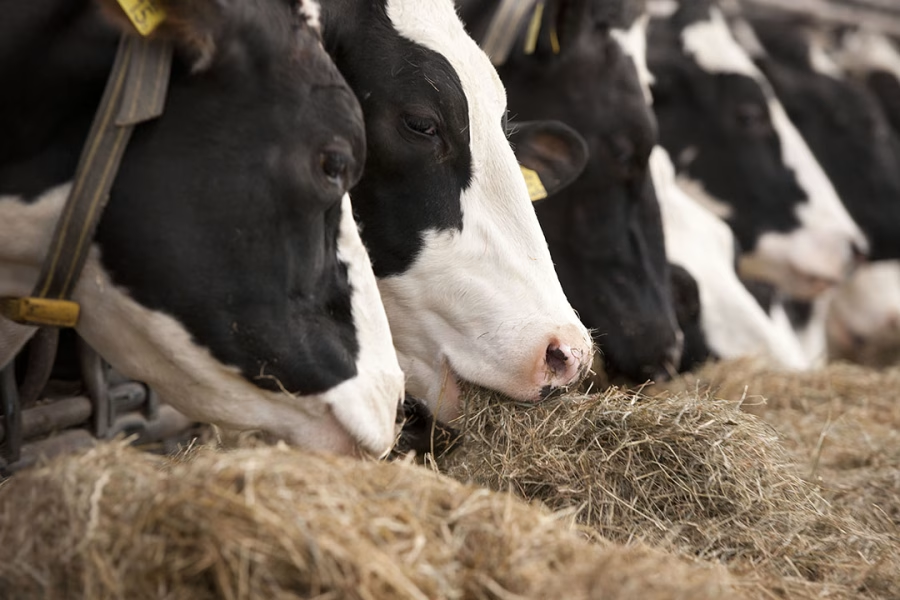Discover why rising freight costs are driving up amino acid prices for animal feed. How is this impacting the global market and your feed formulations? Find out now.

Rising freight costs suddenly raise vital amino acid prices, critical for animal feed in today’s linked world. Knowing how goods affect the supply chain is essential as farmers and cattle nutritionists deal with these financial changes.
Amino acids, the building blocks of protein, play a crucial role in cattle development and health. The demand for these essential feed-grade amino acids is expected to surge from under $10 million to over $40 million annually by 2031, driven by the global rise in protein-based food consumption. However, accessing these vital feed additives depends on addressing the escalating cost factors.
“The integration of amino acids into feed formulations is crucial for advancing animal health,” says a top veterinarian nutritionist.
However, the surge in demand is accompanied by delivery challenges, particularly the significant increase in freight costs. Most feed-grade amino acids are produced in China, which is now facing substantially higher transportation charges to reach markets in the Americas and Europe. This rise in freight costs is a crucial factor driving the overall price increase.
A Multitude of Forces Drive the Surge in the Global Feed-Grade Amino Acid Market
Rising global protein consumption will fuel notable expansion in the feed-grade amino acid market worldwide between 2021 and 2031. As more people want high-protein meals, the agriculture industry is under increased pressure to raise protein output by improving animal feed.
Furthermore, farmers and animal nutritionists acknowledge amino acids as essential components of feed formulations. Improving animal performance—including growth rates, feed efficiency, and general livestock health—requires these vital components.
Furthermore, environmental advantages are noteworthy. Refining feed formulas helps farmers lower nitrogen excretion and lessen the environmental impact of animal farming. In today’s world of sustainability, this environmentally responsible approach is even more crucial.
Improved meat and dairy product quality guarantees safer consumer consumption standards, so enhanced amino acid supplementation also helps food safety.
The expected increase in the feed-grade amino acid market reflects its general advantages. Rising protein needs, known nutritional benefits, environmental concerns, and food safety drive this increase.
Amid Growth, Diverging Price Trends in Amino Acids Require Strategic Planning
As the global feed-grade amino acid market expands, prices for essential amino acids such as lysine, threonine, tryptophan, and valine exhibit a distinct pattern. While the base prices for these amino acids fell early in 2024, the subsequent rise in container prices from China to the Americas and Europe has balanced this potential advantage. In this context, strategic planning and using long-term contracts to hedge against potential freight price rises become crucial for sector participants.
Though base prices are down, the rise in delivery costs maintains net pricing high. Long-term contracts to protect against potential freight price rises might help sector participants. Given present transport cost uncertainty, analysts predict great demand for these contracts throughout the third and fourth quarters.
Elevated Freight Costs: A Rising Tide Lifting Amino Acid Prices
Rising freight costs affect the price of amino acids. Rising transportation costs have wiped out savings even if base prices for essential amino acids such as lysine, threonine, tryptophan, and valine are lower. Prices have been greatly influenced by the higher container loads from China to the Americas and Europe—a main route for these chemicals.
Higher fuel prices, logistical problems, and growing demand for shipping all contribute to the ongoing rise in goods costs. Analysts expect this trend to continue through the summer, driving higher costs.
Most amino acids either stay expensive or rise as transportation costs increase, thus offsetting any base price cuts. Given the unstable cargo conditions, stakeholders in the feed sector should consider long-term contracts and strategic planning. Now would be an intelligent time to set rates for Q3 and Q4.
Freight Costs Outweigh Production Challenges in Methionine Pricing
Although operational difficulties and supply chain interruptions cause declining methionine output, freight costs influence pricing more than production concerns. Global transport routes from China to the Americas and Europe have significantly raised goods prices. This neutralized any price relief from softening manufacturing costs, maintaining constant or increasing methionine prices. This emphasizes logistics’s critical role, as transportation costs influence the final product price.
Methionine Prices Surge Amid Navigation of Increasing Freight Costs, Overshadowing Production Challenges
Though methionine output lags behind world demand, more than production variables affect prices—freight rates. Crucial in animal nutrition, methionine has seen supply chains disrupted and slowed down. These problems affect availability, but growing goods costs are more important in increasing pricing. Higher container loads in the logistics industry mean significantly more importation expenses from Asia to the Americas and Europe. This tendency surpasses usual variations in supply-demand-driven pricing. Stakeholders are more concerned with obtaining good freight contracts to minimize adverse price effects as transportation prices increase. Therefore, even if manufacturing inefficiencies increase complexity, the leading pricing effect is freight prices.
Future Trajectory of Amino Acid Prices Hinges on Global Freight Dynamics
World freight costs will likely determine amino acid pricing. Improved cattle nutrition and the global need for protein-based meals drive the increasing demand for feed-grade amino acids. Still, rising freight charges endanger price stability. Inspired by geopolitical concerns, supply chain problems, and fuel price swings, this pattern points to ongoing growth in shipping prices.
Given growing demand and increased freight prices, forward contracts for Q3 and Q4 could attract considerable attention. Feed producers and livestock growers will probably lock in rates to prevent future cost rises. According to analysts, contracts should be obtained immediately to provide financial security and predictability in a market of uncertainty.
Navigating these problems calls for strategic vision and proactive preparation. Negotiating early and tracking cargo patterns can help offset the effect of rising costs on amino acid pricing, ensuring manufacturers stay profitable and competitive.
The Bottom Line
Higher demand for protein-based diets and improved animal performance via well-chosen feed formulations drive worldwide feed-grade amino acid market expansion. Rising freight expenses from China to the Americas and Europe are raising prices for these feed additives. Although specific amino acid prices are down, more significant transportation costs counteract these declines, driving up prices. Animal feed sector stakeholders must pay great attention to these freight cost changes to control procurement and maintain profitability under changing market circumstances.
Key Takeaways:
- The market is projected to grow significantly, with demand for ration enhancements expected to quadruple by 2031.
- Rising global consumption of protein-based food sources is a major driver of this growth.
- Optimizing feed formulations with amino acids is recognized for improving animal performance, reducing environmental impact, and supporting food safety.
- Although ingredient prices have softened, escalating freight costs are contributing to higher overall prices for amino acids.
- Freight rates from China to major markets like the Americas and Europe have surged, influencing the net price of feed-grade amino acids.
- Despite ongoing production issues, methionine prices are primarily affected by increased shipping costs rather than supply constraints.
- Industry analysts recommend strategic planning for locking in contracts to mitigate price fluctuations in coming quarters.
Summary:
The global demand for essential feed-grade amino acids is expected to rise from under $10 million to over $40 million annually by 2031 due to the rise in protein-based food consumption. However, accessing these essential feed additives is crucial due to rising freight costs, particularly in China, which faces higher transportation charges to reach markets in the Americas and Europe. The rise in container prices from China to the Americas and Europe has balanced the potential advantage of lower base prices for amino acids. Strategic planning and long-term contracts are essential for sector participants to hedge against potential freight price rises. Freight costs influence pricing more than production concerns in methionine pricing, as global transport routes have significantly raised goods prices. Stakeholders are more concerned with obtaining good freight contracts to minimize adverse price effects. Forward contracts for Q3 and Q4 could attract attention, as feed producers and livestock growers may lock in rates to prevent future cost rises. Negotiating early and tracking cargo patterns can help offset the effect of rising costs on amino acid pricing, ensuring manufacturers stay profitable and competitive under changing market circumstances.












